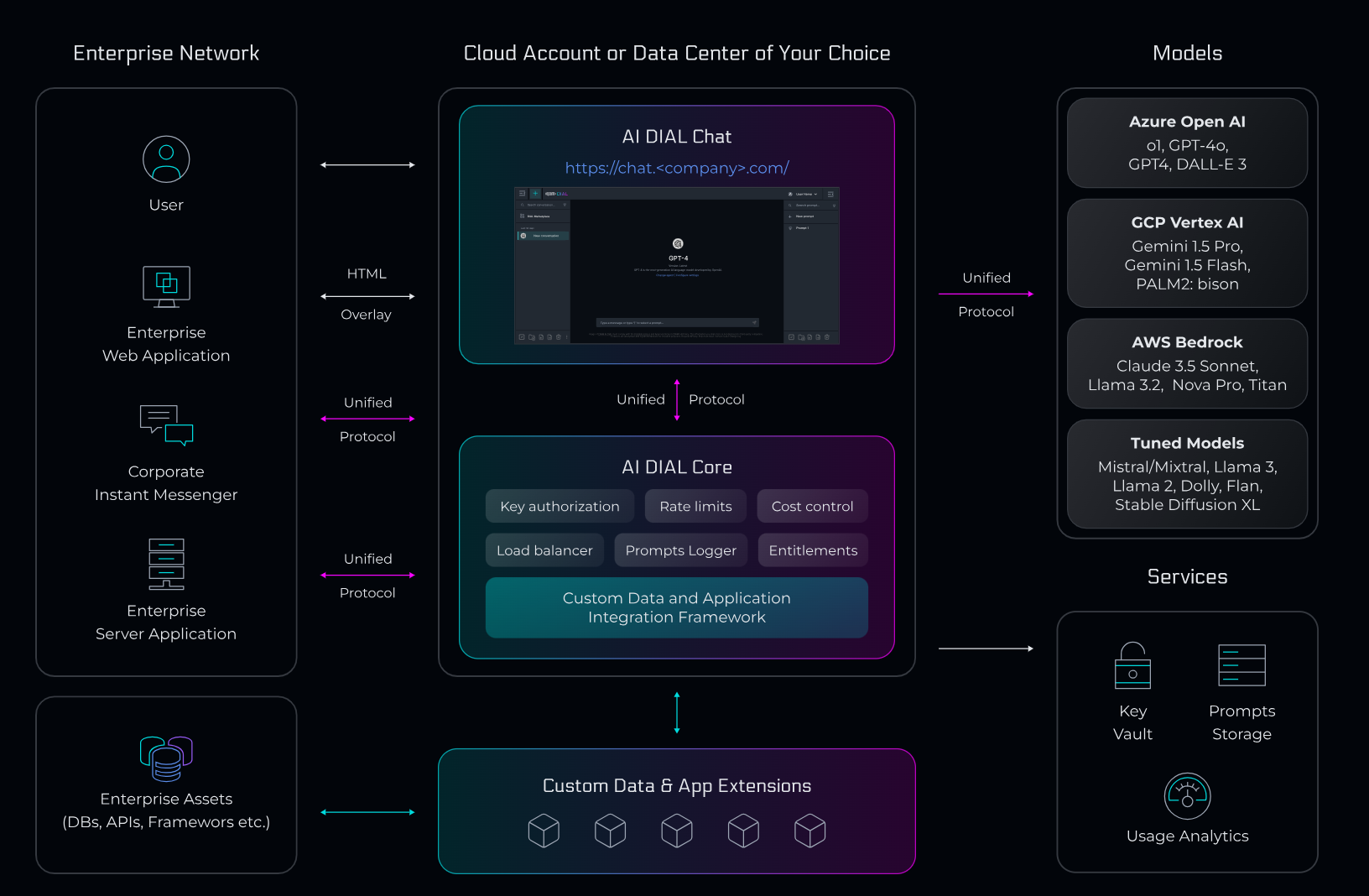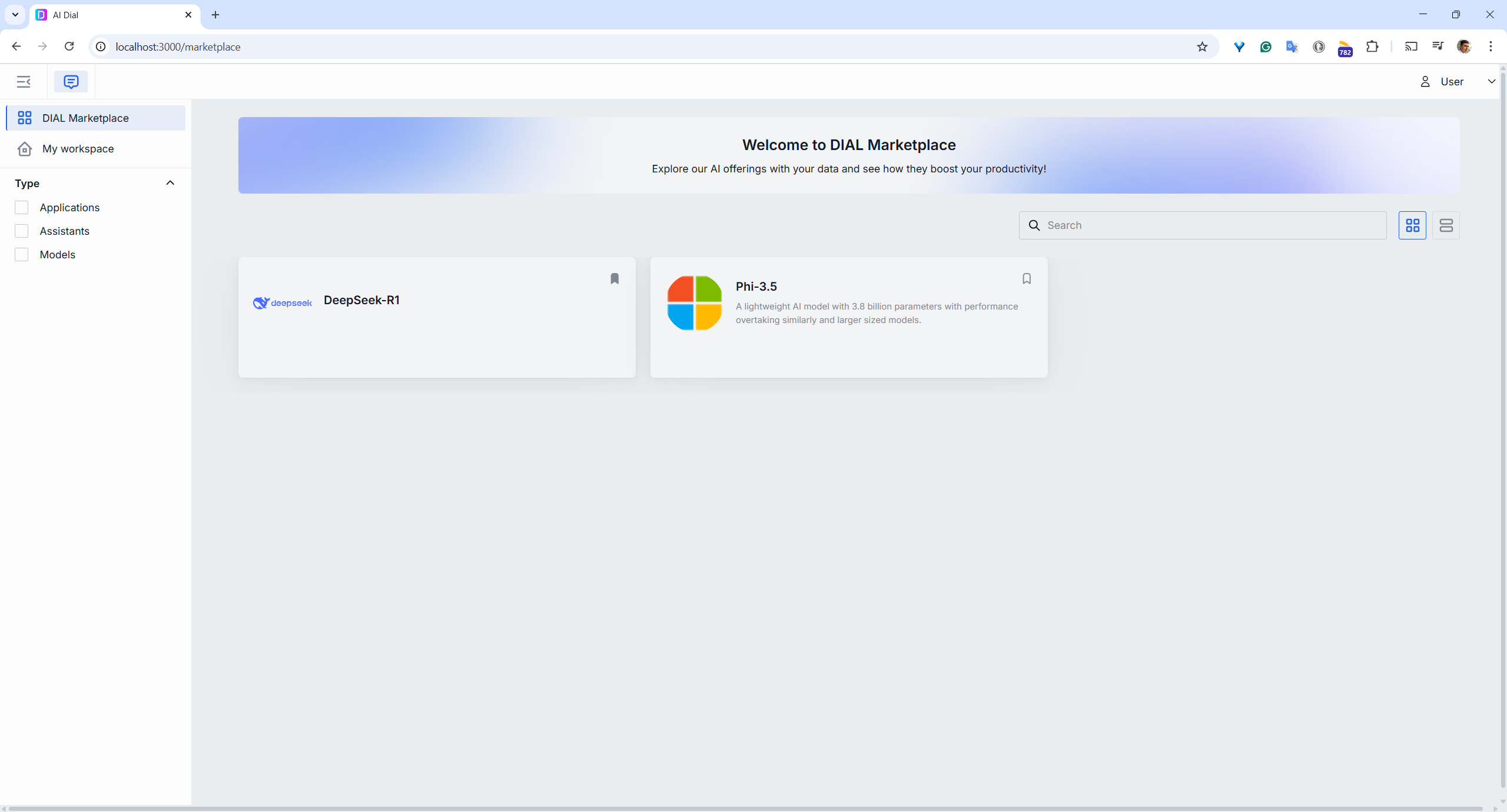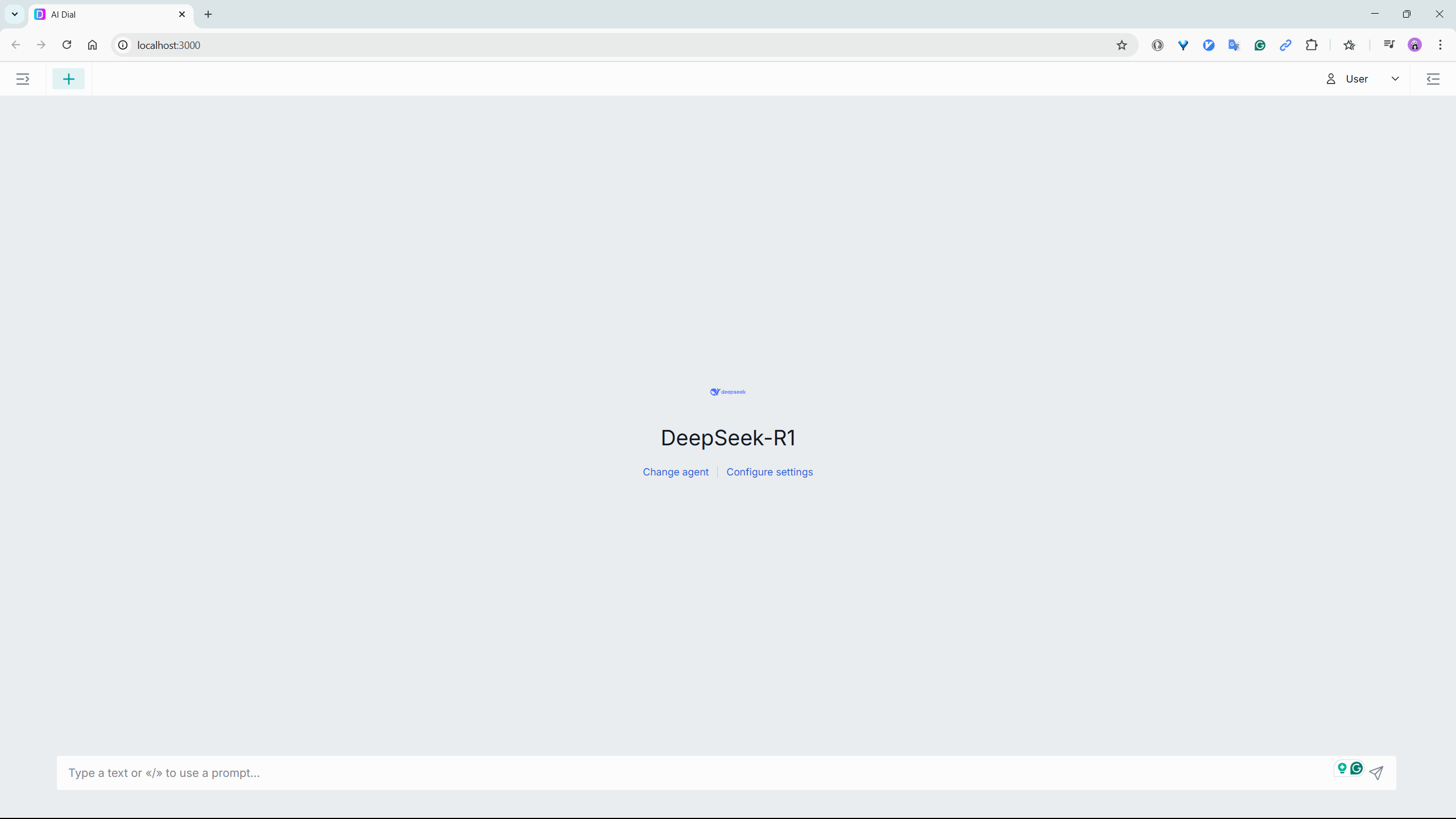TL;DR
Use AI DIAL to streamline and orchestrate Software Development Lifecycle (SDLC) for enterprise Gen AI applications. In this post, I will introduce you to the platform and its capabilities and show you how to get started with it using .NET Aspire.
Source code: https://github.com/NikiforovAll/ai-dial-dotnet
Table of Contents:
Introduction
AI DIAL stands for Deterministic Integrator of Applications and Language Models. It is an enterprise-grade, open-source AI orchestration platform that simplifies the development, deployment, and management of AI-driven applications. AI DIAL acts as both a development studio and an application server, enabling seamless integration between various AI models, data pipelines, and business applications.
See: DIAL 2.0: The Open Source AI Orchestration Platform Overview - YouTube

Key Features
- 🔗 Models Connectivity - provides out-of-the-box adapters for all major LLM providers, including all models hosted in Amazon Bedrock, Google’s Vertex AI, and Azure OpenAI Service. Additionally, you can use language models from the open-source community, alternative vendors, and fine-tuned micro models, as well as self-hosted or models listed on HuggingFace or DeepSeek. As of now, there are over 75 ready-to-use adapters, with more being added regularly. If necessary, DIAL SDK can be used to develop adapters for additional models and vendors. [Learn More]
- 💻 Application Server & Unified API - provides a single Unified API, based on OpenAI API, for accessing all language models, embedding models and applications. The key design principle is to create a unification layer that allows all models and applications to be interchangeable, delivering a cohesive conversational experience and future-proof development of custom GenAI applications.[Learn More]
- 🛠️ Extensibility - AI DIAL can be extended beyond its standard capabilities to meet specific business requirements. You can leverage the SDK to create custom model adapters and GenAI applications, and even include new application types to build fully custom implementations. AI DIAL Chat also enables the creation of custom chat UI components. [Learn More]
- 💬 Customizable Chat & Overlay - Powerful and highly customizable chat application for end-users, with enterprise-grade access control, extendable functionality and ability to add custom GenAI applications. Overlay enables a seamless embedding of chat into any existing web application. [Learn More]
- ➕ Marketplace - Marketplace gives access to all conversational agents available within the organization. Additionally, the marketplace offers collaboration tools for users and supports Role-Based Access Control (RBAC) to streamline teamwork and ensure secure access to resources. [Learn More]
Getting Started via .NET Aspire
Now, you know what DIAL is. Let’s see how to get started with it using .NET Aspire.
🎯 Goal. Let’s say we want to:
- Create DIAL installation with two models:
deepseek-r1andphi3 - Use DIAL Chat UI to interact with the models
- Use them in our application programmatically through DIAL Unified API
Hosting Integration
First, we want to add DIAL hosting integration to AppHost project by adding the EPAM.Dial.Aspire.Hosting NuGet package:
dotnet add package Nall.EPAM.Dial.Aspire.Hosting
Then, we need to add the DIAL hosting integration to the AppHost/Program.cs:
var builder = DistributedApplication.CreateBuilder(args);
var ollama = builder
.AddOllama("ollama")
.WithOpenWebUI()
.WithDataVolume()
.WithLifetime(ContainerLifetime.Persistent);
ollama.AddModel("ollama-deepseek-r1", "deepseek-r1:1.5b");
ollama.AddModel("ollama-phi3", "phi3.5");
var dial = builder.AddDial("dial", port: 8080).WaitFor(ollama).WithChatUI(port: 3000);
var deepseek = dial.AddModel("deepseek", deploymentName: "deepseek-r1:1.5b")
.WithEndpoint(ollama.Resource.PrimaryEndpoint)
.WithDisplayName("DeepSeek-R1");
var phi3 = dial.AddModel("phi3", deploymentName: "phi3.5")
.WithEndpoint(ollama.Resource.PrimaryEndpoint)
.WithDisplayName("Phi-3.5");
builder.AddProject<Projects.Api>("api").WithReference(deepseek).WithReference(phi3).WaitFor(dial);
builder.Build().Run();
In the example above, we are adding the DIAL hosting integration to the AppHost project. We are also adding two models: ollama-deepseek-r1 and ollama-phi3, which are hosted on the Ollama server. We are also adding a DIAL Chat UI that will be available on port 3000.
💡 You are not limited to only self-hosted models. AI DIAL allows you to access models from all major LLM providers, language models from the open-source community, etc. See Supported Models for more information.
Now, we can open Aspire Dashboard and explore the component graph.

Let’s open the DIAL Chat UI and navigate to the marketplace to see the available models.

Select the deepseek model and click on the “Use Model” button. You will be redirected to the chat UI, where you can interact with the model.

The Chat UI is pretty powerful. For example, you can compare the output of two models by using Compare Mode. Here you can see the output of deepseek and phi3 models side by side.

Client Integration
Now, let’s see how to use the DIAL Unified API in our application. We will use the EPAM.Dial.Aspire NuGet package to access the IChatClient implementation to trigger chat completions.
dotnet add package EPAM.Dial.Aspire
All we need is to add the DialClient to the Api/Program.cs:
var builder = WebApplication.CreateBuilder(args);
builder.AddServiceDefaults();
builder.AddDialOpenAIClient`("deepseek").AddChatClient(); // <--- client integration
var app = builder.Build();
app.MapGet(
"/chat",
async ([FromQuery] string query, [FromServices] IChatClient client) =>
{
var prompt = $"You are helpful assistant. Answer the following question: '{query}'";
var response = await client.GetResponseAsync(prompt);
return Results.Ok(response);
}
);
app.MapDefaultEndpoints();
app.Run();
In the example above, we are adding the DIAL client implementation of the IChatClient from Microsoft.Extensions.AI which is a standard way of integrating with LLMs in .NET.
💡 Note, it is called AddDialOpenAIClient because essentially, it adds OpenAI under the hood. This is possible because completion part of the Unified API is compatible with the OpenAI API.
Demo
🚀Now, let’s this in action:
curl --url 'http://localhost:5181/chat?query=Test'
Output:
{
"messages": [
{
"authorName": null,
"role": "assistant",
"contents": [
{
"$type": "text",
"text": "<think>\n\n</think>\n\nIt seems like you might be referring to a \"test\" or something related to testing, but I don’t have specific information about what you’re asking. Could you clarify your needs? Are you asking about how to perform a test, taking a test as part of an educational purpose, or something else? Let me know so I can assist you better!",
"additionalProperties": null
}
],
"messageId": "chatcmpl-161",
"additionalProperties": null
}
],
"responseId": "chatcmpl-161",
"chatThreadId": null,
"modelId": "deepseek-r1:1.5b",
"createdAt": "2025-03-30T13:05:43+00:00",
"finishReason": "stop",
"usage": {
"inputTokenCount": 16,
"outputTokenCount": 76,
"totalTokenCount": 92,
"additionalCounts": {}
},
"additionalProperties": {
"SystemFingerprint": "fp_ollama"
}
}
Conclusion
🙌 In this post, I have introduced you to AI DIAL, an open-source AI orchestration platform that simplifies the development, deployment, and management of AI-driven applications. I have also shown you how to get started with it using .NET Aspire.
This is just the a scratch of the surface of what you can do with DIAL. I encourage you to explore the platform and its capabilities further. Let me know if you are interested in more posts about DIAL and its features.